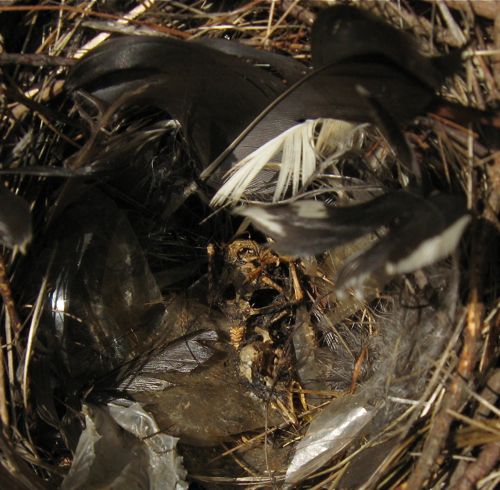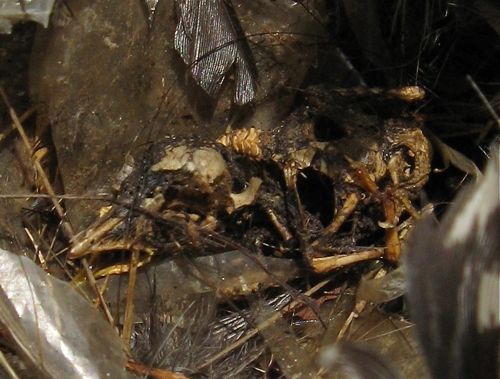As reported last week, there was trouble in the bird feeder that the house wrens had chosen to use as a nest cavity. Today, I got the conclusion of the store:

The one remaining nestling was dead. Most likely it died not long after I took it's photo the previous week. It does not look like it was the victim of a predator and chicks that young can die quickly from exposure or lack of food.

In today's ninety degree temperatures, I suspect heat had a great deal to do with the failure of this nest. This feeder gets direct sun in the afternoon and it's made of metal--not the best nursery in late July and August, even in the northern US.

I was amazed at how quickly the chick had decomposed and marveled at the delicate beauty of the minute skeleton. I also noticed that the nest was lined with clear plastic as well as feathers. I knew house sparrows did that, but this is the first time I have seen it in a house wren nest.
It's a sad end to the bird feeder nest, but that's the way it goes sometimes for birds. They try something new and if it works, they continue to adapt to an environment continually changed by humans. If it doesn't, well they can always try twice again next year. And it's a lesson for us to make sure that this feeder stays closed all the time to prevent some other wren family from engaging in this lethal experimental nest.
